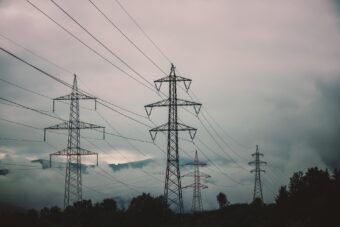
Earlier this year, electricity prices in the region and Europe were at the level from two years ago, but this was not a sign of the easing of the energy crisis, but a direct consequence of non-working days in companies. Unfortunately, the high prices trend has been going on for too long, making the talk about an energy crisis almost redundant. We spoke with Marko Janković, Director of the Electricity Market Directorate of Elektromreža Srbije (EMS), about the development of the electricity market in new circumstances and the opportunities for establishing a flexibility and electricity storage service market.
EP: In which way will the adapted EU regulations of the third and fourth energy package, adopted in December at the Energy Community’s Ministerial Council session, affect the further development of the electricity market in Serbia?
Marko Janković: Serbia’s electric power system is part of the European interconnection, that is, EMS AD Belgrade is a member of the Association of European Transmission System Operators. The transposition of these regulations means harmonizing the legal framework of non-EU countries with the European legislation that regulates the energy sector in Europe, the European electricity market, and, therefore, the work within the European interconnection. The transposition of the adapted decrees into our legislation and the implementation of the processes and standards defined in the aforementioned decrees must be carried out while being mindful of the technical features of our energy sector. With the adoption of these regulations, there is a possibility now for the merger of the organized electricity market in Serbia with the single European organized market. It will bring stability in terms of electricity prices, making the electricity market in Serbia less volatile and susceptible to speculative actions.
Another benefit of transposing EU legislation into national legislation is the opportunity of integrating the national electricity balancing market into a single European balancing market. Thanks to its proactive approach, EMS became a full-fledged member of one of the four European balancing platforms – the International Grid Control Cooperation – IGCC platform (the unique European platform for imbalance netting) in 2022. The benefit of participating in the IGCC platform is certainly the reduction of the activation of the balance reserve, which makes the operations of the Serbian electric power system more reliable and safer. On the other hand, we have lower balancing costs, which automatically benefits participants in the electricity market in Serbia.
IN FOCUS:
- SOLUTION FOR MAINTAINING AND EXTENDING THE LIFE OF INDUSTRIAL BATTERIES
- GOOD POLICIES AND INNOVATIVE TECHNOLOGIES FOR A GREEN TRANSITION
- TAKE ME AWAY…
EP: There are more and more requests for connection to renewable energy sources transmission and distribution systems, primarily solar power plants and wind farms. How should we handle this integration?

Marko Janković: The integration of RES must be based on the market principles because we assumed this obligation by transposing European regulations. Europe has long since taken a position on the issue of further integration of RES. Incentives for RES producers are definitely decreasing, and the incentives are mostly aimed at using small power renewable energy sources. Also, there is a growing trend in Europe to direct incentives towards new technologies, primarily electricity storage – green hydrogen and various types of batteries that will enable intermittent sources of electricity to be more easily integrated into the energy sector and the electricity market.
EP: It seems that this integration is not at all an easy task for the energy system.
Marko Janković: For the energy sector, the integration of intermittent RES represents both an opportunity and a threat. First, it must be viewed through the filter of the impact of a large amount of unmanageable production on the balancing of an electric power system. We all know that maintaining the system’s balance is the primary goal and that only in this way can we ensure that all system users can perform their activities without problems. That is why we need to have a clear plan for the integration of RES into an electric power system with, first and foremost, defined preventive measures that would mitigate the negative effects of connecting many intermittent electricity sources. These measures must ensure sufficient base power in the system, which is necessary to integrate intermittent RES. It can be achieved by building new conventional sources of electricity, primarily reversible plants, for which Serbia has the potential, but also by integrating alternative sources such as electricity storage (be it a battery or green hydrogen), as well as taking active participation in manageable consumption through the development of the flexibility service market.
EP: There is a lot of talk about distributed production and flexibility services. Could you elaborate on these new concepts?
Marko Janković: Given the constant increase in distributed electricity from distribution resources, especially RES and other electricity sources (electricity storage), as well as the increasingly frequent inclusion of end customers as active participants in the market in terms of manageable consumption, the key issue of further market development is how to integrate the distribution system users into the electricity market. The answer lies in the flexibility concept. We should also not forget electromobility, the influence of electric car chargers and electric cars on the distribution system’s operation, as well as their role in the future electricity market. Flexibility implies the ability to deliberate, i.e. intentional deviation from the planned (usual) model of consumption or production. In other words, flexibility is the ability of a system user to deviate from its planned electricity consumption (or production) profile in response to price signals or market incentives.
Interviewed by: Milica Radičević
Read the story in the new issue of the Energy portal Magazine ENERGETIC EFFICIENCY

